Today’s Current Affairs: 5th June 2025 for UPSC IAS exams, State PSC exams, SSC CGL, State SSC, RRB, Railways, Banking Exam & IBPS, etc
Table of Contents
World Wealth Report 2025:
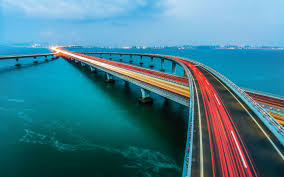
India saw an 8.8 percent rise in high-net-worth individual (HNWI) wealth in 2024, witnessing 378,810 millionaires with a total wealth of $1.5 trillion by the end of last year, according to the World Wealth Report 2025 released recently.
Highlights of World Wealth Report 2025:
- The Global high-net-worth individuals (HNWIs) population rose by 2.6 percent in 2024.
- This increase was driven by the growth in the population of ultra-high-net-worth individuals (UHNWIs), which grew by 6.2 percent, as strong stock markets and AI optimism boosted portfolio returns.
- HNWIs are individuals with investable assets of $1 million or more, excluding their primary residence, collectibles, consumables, and consumer durables.
- HNWIs are segmented into three categories based on wealth bands: Ultra-HNWIs($30 million or more), Mid-Tier Millionaires ($5-30M), and Millionaires Next Door (USD 1-5M).
- The data indicates that alternative investments, such as private equity and cryptocurrencies, are now an established presence in HNWI holdings, representing 15 percent of their portfolios.
- Within the largest individual markets, the S. was the clear leader, adding 562,000 millionaires as the country’s HNWI population grew by 7.6% to 7.9 million.
- This dominance in wealth extends across all tiers: 36% of the world’s centi-millionaires (those with over $100 million) and 33% of the world’s billionaires reside in the United States.
- India and Japan were standouts in the Asia-Pacific region, with both countries registering 6% growth, adding 20,000 and 210,000 millionaires, respectively.
- In contrast, growth in China was negative, with the HNWI population declining by 1.0%.
- India saw an 8.8 percent rise in high-net-worth individual (HNWI) wealth in 2024, witnessing 378,810 millionaires with a total wealth of $1.5 trillion by the end of last year.
- The report further highlights the presence of a growing segment of “millionaires next door,” with India counting 333,340 individuals in this category, holding a combined wealth of $628.93 billion.
- At the pinnacle of wealth, India also saw 4,290 ultra-high-net-worth individuals (UHNWIs) by the close of 2024, collectively possessing $534.77 billion.
World Environment Day 2025:
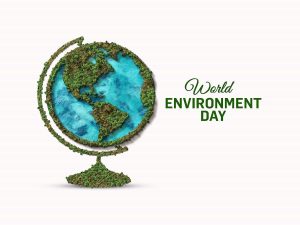
World Environment Day is observed every year on June 5 across more than 150 countries.
- Led by the United Nations Environment Programme (UNEP), it is an international day dedicated to raising global awareness about environmental issues and encouraging individuals, organisations, and others to take a step towards protecting the planet.
- World Environment Day 2025 Theme: Beat Plastic Pollution
- This year, the Republic of Korea is leading the campaign to spread awareness with a focus on ending plastic pollution globally.
Ice Breaker Missile:
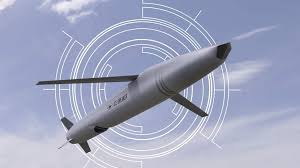
The Indian Air Force (IAF) is considering the acquisition of Israel’s advanced air-launched cruise missile, the ‘Ice Breaker.’
- Ice Breaker Missile is a long-range, autonomous, precision-guided weapon system.
- It was developed by Israeli defense company Rafael Advanced Defense Systems.
- Compatible with multiple air and ground platforms, it offers significant flexibility in operational deployment.
- It is suitable for jet fighters, light attack aircraft, and helicopters as well as small maritime vessels and ground vehicles.
- It’s about 4 meters long, weighs less than 400 kg, and can hit targets up to 300 km away at high subsonic speeds, carrying a 250 lb warhead.
- It uses an incredibly advanced electro-optical seeker that can “see” in all weather conditions.
- It is loaded with artificial intelligence that helps it recognize targets and ensures it only engages hostile ones.
- It flies incredibly low, hugging the terrain or skimming the waves, and its design makes it very hard to detect.
- This ‘Very Low Observable’ (VLO) capability gives it a significant edge in getting to its target unnoticed.
- It is remarkably compact and lightweight – under 400 kg.
- It can work in a synchronized attack with multiple missiles.
- It can function autonomously or in a man-in-the-loop mode.
Kulsi River:

Ignoring warnings by environmentalists, the Assam and Meghalaya governments have decided to jointly set up a 55 MW hydropower project on the Kulsi, a small river known as a nesting ground for the endangered river dolphins.
- Kulsi River is a south-bank tributary of the mighty Brahmaputra
- It is composed of three rivers, namely Khri, Krishniya and Umsiri all of which originate from the West Khasi hill ranges of Meghalaya from an elevation of over 1800 metres and flow north.
- The river is known as Khri in the upper catchments, and after being joined by two other tributaries, namely Krishniya and Umsiri, within the Khasi hills in Meghalaya, it flows northwest and enters Assam at Ukium.
- After that it flows north up to Kulsi village through the plains of Kamrup District of Assam.
- Finally, it outflows into the Brahmaputra near Nagarbera.
- The river Kulsi drains out a total area of 3770 sq. km. Out of the total catchment, 685 sq. km. is plain catchment in Assam, and 3085 sq. km. is hill catchment in Meghalaya and Assam.
- The total length of Kulsi from its source to outfall is about 220 km, out of which 100 km is in Meghalaya and the rest, 120 km, is in Assam.
- It is considered one of the last refuges of the endangered Gangetic dolphin (Platanista gangetica gangetica) in Assam.
Two new wetlands: Ramsar Sites
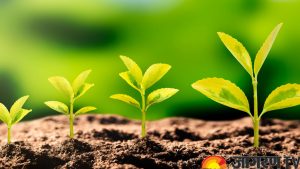
The Ministry of Environment, Forest and Climate Change (MoEFCC) announced that two new wetlands — Kichan in Phalodi and Menar in Udaipur — from Rajasthan have been designated as Ramsar sites.
Menar Wetland:
- It is a freshwater monsoon wetland complex located in Rajasthan.
- It is formed by three ponds, Braham talab, Dhand talab and Kheroda talab, and agricultural land that connects the latter two.
Khichan Wetland:
- It is located in the northern Thar Desert, Rajasthan.
- It comprises two water bodies, Ratri nadi (river) and Vijaysagar talab (pond), riparian habitat and scrub land.
C CARES Version 2.0:
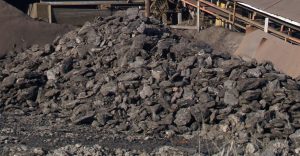
The Ministry of Coal recently announced the launch of the C CARES Version 2.0 portal.
- C CARES Version 2.0 is an upgraded web portal of the Coal Mines Provident Fund Organization (CMPFO).
- The platform, developed by the Centre for Development of Advanced Computing (C-DAC), aims to enhance efficiency and transparency in Provident Fund and Pension disbursements for coal sector workers.
- The upgraded portal brings together coal workers, coal companies, and CMPFO on a unified digital platform, enabling real-time tracking of claims, automated ledger updates, and direct benefit transfers to workers’ accounts.
- The system, developed with support from the State Bank of India, promises faster claim settlements, improved service delivery, and greater ease of access.
- The platform also includes a mobile application for CMPF members, allowing them to view profiles, track claims, raise grievances, and check PF balances.
- The app features a chatbot assistant for easy navigation and information retrieval.
- For coal companies and CMPFO, the system offers a prescriptive dashboard that generates custom reports, analyzes claim settlement trends, and supports data-driven decision-making to improve efficiency.
International Crops Research Institute for Semi-Arid Tropics:

The International Crops Research Institute for Semi-Arid Tropics (ICRISAT) and Research and Information System for Developing Countries (RIS) launched a new Centre of Excellence for transformation of agriculture in developing countries through South-South cooperation.
- International Crops Research Institute for Semi-Arid Tropics was established under a Memorandum of Agreement between the Government of India and the CGIAR on 28 March 1972.
- It is a non-profit, non-political public international research organisation that conducts agricultural research for development in Asia & sub-Saharan Africa.
- ICRISAT’s vision is a prosperous, food-secure and resilient dryland tropics.
- It is dedicated to combating poverty and uplifting the livelihoods of communities in the dryland regions it serves.
- It helps farmers by providing improved crop varieties and hybrids and also helps smallholder farmers in the drylands fight climate change.
- It conducts research on five highly nutritious drought-tolerant crops: chickpea, pigeonpea, pearl millet, sorghum, and groundnut.
- It has been awarded the 2021 Africa Food Prize for the Tropical Legumes Project that has improved food security across 13 countries in sub-Saharan Africa.
- It is headquartered in Hyderabad, Telangana State, in India, with two regional hubs (Nairobi, Kenya and Bamako, Mali).
Lady’s-Slipper Orchid:

The Lady’s Slipper orchid, once believed to be extinct in the UK for nearly a century due to over-collection, was rediscovered in 1930 when a single plant was found. It has now been spotted growing naturally in the wild again in England.
- It belongs to the subfamily Cypripedioideae (Orchidaceae) and known for their distinctive slipper-shaped labellum that aids pollination by trapping insects.
- Declined due to overcollection, medicinal use, habitat loss, and failed transplantation. They are difficult to cultivate due to specific soil and fungal needs.
- Conservation in India is led by the Botanical Survey of India (BSI) and other institutions through in-situ and ex-situ conservation, tissue culture propagation, and habitat restoration.
- Conservation Status
- CITES: Appendix I & II
- IUCN Red List: Critically endangered/ Endangered
- Wildlife Protection Act, 1972: Schedule III
Industrial Iron Pollution Disrupts Ocean Nutrient Cycles:

A study finds that industrial iron pollution depletes ocean nutrients and disrupts marine ecosystems, posing major ecological risks.
- Human-released iron boosts spring phytoplankton blooms and accelerates nutrient loss, worsening ocean nutrient depletion amid climate change.
- These threaten the entire marine food chain, from zooplankton to whales, especially affecting species unable to migrate or adapt.
- Phytoplankton are microscopic algae with chlorophyll that need sunlight to grow and form the base of the marine food chain, but excess nutrients can trigger toxic harmful algal blooms (HABs) affecting marine life and humans.
- India’s Iron and Steel Sector Emissions: India’s iron and steel industry contributes 5% to national GHG emissions.
- The iron and steel industry causes significant pollution due to the use of coal and iron ore. Furnace operations release sulphur oxides (SOx), nitrogen oxides (NOx), carbon dioxide (CO₂), carbon monoxide (CO), particulate matter (PM2.5 and PM10), and polycyclic aromatic hydrocarbons (PAHs).
- Additionally, it generates wastewater, hazardous waste, and solid waste, leading to air, water, and soil pollution.
Coringa Wildlife Sanctuary:
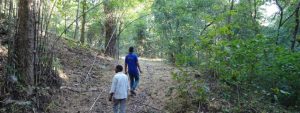
Experts from the Wildlife Institute of India (WII), Dehradun, have collared three endangered fishing cats (Prionailurus viverrinus) for the first time in India to study various factors such as home range, behaviour, breeding and prey patterns of the species, in the Coringa Wildlife Sanctuary (CWS).
- Coringa Wildlife Sanctuary is part of the Godavari estuary, where the Coringa river confluences into the Bay of Bengal in the Kakinada district of Andhra Pradesh.
- About 40% of the sanctuary is only sea-backwaters and the rest of the area is intermingled with creeks and gets inundated with tidal waters.
- It is home to endangered mammals like Smooth Indian otter, Fishing cat, Jackal, etc. And also home to birds like Black capped kingfisher, Brahminy kite, Sea gulls, Reef heron, Sand piper, etc.
- The sea coast of the Coringa Wildlife Sanctuary is a breeding ground for Olive ridley turtles.
- Fishing Cat is a medium-sized wild cat. It is a solitary and nocturnal hunters that rest during the day amongst dense vegetation and then at night head to the water to find food. They are very strong swimmers.
Conservation status
- IUCN: Vulnerable
- CITES: Appendix II
- Wildlife Protection Act 1972:Schedule I.
UNESCO Global Education Monitoring (GEM) Report 2024–25:
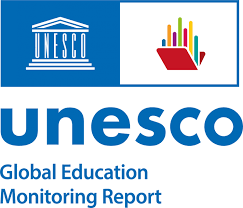
The UNESCO Global Education Monitoring (GEM) Report 2024–25 highlights that India continues to struggle with poor learning outcomes despite near-universal school enrolment.
Key Findings of UNESCO Global Education Monitoring (GEM) Report 2024–25:
- Near-Universal Enrolment but Poor Learning Outcomes (India): Despite >95% primary school enrolment, India struggles with foundational literacy and numeracy gaps
- Globally, only 87 boys per 100 girls achieve minimum reading proficiency. In middle-income countries, it drops to 72 boys per 100 girls.
- While gender parity was improving, COVID-19 reversed gains—girls now underperform in math in countries like Brazil, UK, and Italy.
- In India, 60% of elementary teachers are women, but only 13% of vice-chancellors in central universities were women as of 2022.
- Many Indian states lack formal principal training despite NEP 2020’s provision of 50 hours of annual professional development.
- Less than 50% of surveyed countries require headteachers to undergo leadership preparation before appointment.
- In some African countries, female-led schools showed up to 1 additional year of learning gain over male-led ones.
- Case studies (e.g., Delhi’s pilot on middle leadership) show teacher trust improves with effective mentorship and distributed leadership.
Digital Drive by IRCTC:

IRCTC deactivated 2.5 crore suspicious user IDs to curb automated bot bookings and improve genuine user access.
Features:
- Deactivation of Suspicious IDs: 2.5 crore fake/suspicious accounts blocked.
- Anti-Bot Systems & CDN Integration: Prevents automated bookings by touts.
- Mobile & Email Revalidation: 20 lakh IDs sent for verification.
- Aadhaar-Based Authentication: Non-Aadhaar users face a 3-day wait for Tatkal bookings.
- Aadhaar-verified users get instant access.
- Cybercrime Complaints: 131 complaints filed against fraudulent users.
16th Census of India:
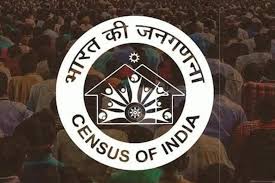
The Government of India has announced that the 16th Census will conclude by March 2027, marking the first digital and caste-based census in Independent India.
- A Census is the official enumeration of population, providing vital statistics on demography, economy, and socio-cultural aspects at every administrative level.
- Conducted every 10 years under the supervision of the Registrar General and Census Commissioner of India, Ministry of Home Affairs.
Features of the Upcoming Census (2026–27):
- First Digital Census: Data collection will be done through a mobile application replacing paper schedules.
- Caste Enumeration Included: For the first time since Independence, caste data will be collected alongside SC/ST data.
- Self-Enumeration Option: Households with updated National Population Registry details may use an online portal for self-enumeration.
- Two-Phase Enumeration:
- Phase 1: House-listing and housing schedule
- Phase 2: Population enumeration (includes caste data)
India has won the Presidency of the International Institute of Administrative Sciences (IIAS) for the 2025–2028 terms:
International Institute of Administrative Science is a federation of member States, national sections and academic research centres jointly elaborating public administration solutions to the policy challenges of the day. It is a Federation of 31 Member Countries, 20 National Sections and 15 Academic Research Centres jointly collaborating for scientific research on public administration. Key member countries include – India, Japan, China, Germany, Italy, Korea, Saudi Arabia, South Africa, Switzerland, Mexico, Spain, Qatar, Morocco, Indonesia etc.
Stampede at Bengaluru’s Chinnaswamy Stadium:
A stampede at Bengaluru’s Chinnaswamy Stadium during RCB’s IPL victory parade on June 4, 2025, led to the tragic death of 11 people and injured over 30, exposing critical flaws in crowd management. A stampede is a sudden, uncontrolled rush of a crowd, typically caused by fear, panic, or excitement in a confined or unregulated space. It can result in severe injuries or fatalities due to crushing, suffocation, or trampling.
Causes of Stampede in India:
- Overcrowding
- Poor Planning & Regulation
- Communication Gaps
- Infrastructure Bottlenecks
- Lack of Emergency Protocols
India has been elected to the United Nations Economic and Social Council (ECOSOC) for the 2026–28 term:
India has been elected to the United Nations Economic and Social Council (ECOSOC) for the 2026–28 term with overwhelming global support. United Nations Economic and Social Council (ECOSOC) established in 1945 under the UN Charter. Total Members: 54 countries, elected by the UN General Assembly for a 3-year term. Key Role: Central UN platform for policy dialogue, coordination, and consensus on economic, social, and humanitarian issues
Nomura Forecasts India’s GDP to Slow to 6.2% in FY26:
Japanese brokerage firm Nomura has projected that India’s GDP growth will moderate to 6.2% in FY26, down from 6.5% in FY25, signaling a slowdown from the sharp 9.2% expansion recorded in FY24. The forecast, released on June 3, 2025, reflects increasing divergence between robust headline metrics such as GST collections and weaker indicators like automobile sales and bank credit growth.This revision is significant as it contrasts with the Reserve Bank of India’s (RBI) estimate of maintaining 6.5% growth in FY26. Nomura’s more cautious outlook arrives amidst mixed economic signals and growing global uncertainties that may hamper India’s economic momentum and private investment cycle.
Nicaragua Becomes 101st WTO Member to Accept Fisheries Subsidies Agreement:
Nicaragua became the 101st member of the World Trade Organization (WTO) to formally accept the Agreement on Fisheries Subsidies, marking a significant step toward global efforts to combat harmful fishing practices and restore marine biodiversity. The instrument of acceptance was handed over to WTO Director-General Ngozi Okonjo-Iweala by Nicaragua’s Ambassador Rosalía Bohorquez Palacios, bringing the WTO just 10 acceptances away from the threshold required for the agreement’s entry into force.
Flipkart has become the first large e-commerce firm in India to receive a Non-Banking Financial Company licence from the Reserve Bank of India:
Walmart-owned Flipkart has received approval from the Reserve Bank of India (RBI) to operate as a Non-Banking Financial Company (NBFC). With this licence, Flipkart can now offer loans directly to its customers and sellers, moving beyond partnerships with traditional lenders. This move marks the first time an Indian e-commerce giant has been granted such a licence, paving the way for deeper fintech integration in online retail.The RBI granted Flipkart Finance Private Limited a certificate of registration to operate as an NBFC. This approval is significant as it allows Flipkart to Lend directly, unlike its previous tie-ups with banks.Operate independently in the credit space. Expand its fintech ecosystem through its app, super.money.
Ashwani Lohani Appointed Director of Prime Ministers Museum and Library:
Ashwani Lohani, former Chairman and Managing Director of Air India and ex-Chairman of the Railway Board, has been appointed as the Director of the Prime Ministers Museum and Library (PMML) in New Delhi. The Appointments Committee of the Cabinet approved his appointment on June 4, 2025, for a tenure of three years, filling the vacancy left after the exit of former power secretary Sanjiv Nandan Sahai.
DBT Observes Swachhata Pakhwada 2025 with 188 Cleanliness Activities Across India:
As part of the Government of India’s Swachh Bharat Mission, the Department of Biotechnology (DBT) under the Ministry of Science & Technology actively observed Swachhata Pakhwada 2025 from May 1 to May 15, organizing 188 activities across its headquarters in New Delhi, autonomous institutions (AIs), and public sector undertakings (PSUs). The initiative was aimed at promoting cleanliness, public health, environmental sustainability, and civic participation through various outreach and awareness programs
Himachal Pradesh CM Sukhvinder Singh Sukhu inaugurated the Rajiv Gandhi Van Samvardhan Yojana:
Himachal Pradesh Chief Minister Sukhvinder Singh Sukhu launched the Rajiv Gandhi Van Samvardhan Yojana from Hamirpur on June 2, 2025. The scheme aims to increase the state’s green cover by planting fruit-bearing trees on degraded forest lands while promoting employment generation and community involvement through Mahila Mandals, Yuvak Mandals, and self-help groups (SHGs .The launch of the Rajiv Gandhi Van Samvardhan Yojana and the Green Adoption Scheme marks a strategic move by the Himachal Pradesh government to combine climate action with grassroots participation. With Himachal facing a shortage of field forest staff and growing ecological challenges, these initiatives aim to restore forest health, involve citizens, and generate local employment, especially for women and youth.




